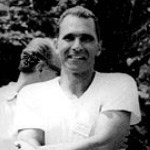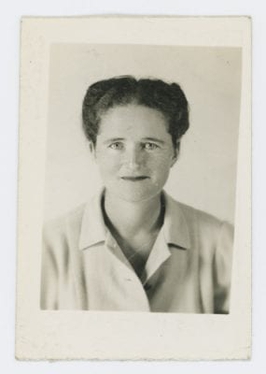Related Research Articles

Nuzi was an ancient Mesopotamian city southwest of the city of Arrapha, located near the Tigris river. The site consists of one medium-sized multiperiod tell and two small single period mounds.

James Bennett Griffin or Jimmy Griffin was an American archaeologist. He is regarded as one of the most influential archaeologists in North America in the 20th century.

Ephraim Avigdor Speiser was a Polish-born American Assyriologist and translator of the Torah. He discovered the ancient site of Tepe Gawra in 1927 and supervised its excavation between 1931 and 1938.

Erich Friedrich Schmidt was a German and American-naturalized archaeologist, born in Baden-Baden. He specialized in Ancient Near East Archaeology, and became professor emeritus at the Oriental Institute of the University of Chicago. He was also a pioneer in using aerial photography in archaeological research.

Tepe Gawra is an ancient Mesopotamian settlement 15 miles NNE of Mosul in northwest Iraq that was occupied between 5000 and 1500 BC. It is roughly a mile from the site of Nineveh and 2 miles E of the site of Khorsabad. It contains remains from the Halaf period, the Ubaid period, and the Uruk period. Tepe Gawra contains material relating to the Halaf-Ubaid Transitional period c. 5,500–5,000 BC.
Thomas Pluckhahn is an assistant professor of the Department of Anthropology at the University of South Florida. His areas of specialization in the field of anthropology include Eastern United States Prehistory, Mesoamerican Prehistory, Cultural Resource Management, Settlement Pattern Studies, Archaeology of Households, Environmental Anthropology, Ceramic Analysis, and GIS Applications for Anthropology.
Hajji Firuz Tepe is an archaeological site located in West Azarbaijan Province in north-western Iran and lies in the north-western part of the Zagros Mountains. The site was excavated between 1958 and 1968 by archaeologists from the University of Pennsylvania Museum of Archaeology and Anthropology. The excavations revealed a Neolithic village that was occupied in the second half of the sixth millennium BC where some of the oldest archaeological evidence of grape-based wine was discovered in the form of organic residue in a pottery jar.
Tell Billa is an archaeological site near Bashiqa in Nineveh Province (Iraq) 20 kilometers northeast of Mosul. Beginning in Middle Assyrian times the ancient city, not far from Assur, was named Shibaniba. Its earlier name is not known. In 2022 it was proposed that Tell Billa was the site of the Ur III period Hurrian city Šimānum.
Tell Arpachiyah is a prehistoric archaeological site in Nineveh Province (Iraq). It takes its name from a more recent village located about 4 miles (6.4 km) from Nineveh. The local name of the mound on which the site is located is Tepe Reshwa.
Joe Ben Wheat (1916–1997) was an American archaeologist, curator, teacher, and author known for his expertise on woven textiles produced by the Navajo and other Native American tribes in Arizona, New Mexico, and Colorado. His research also focused on Mogollon, Anasazi, Great Plains Paleo-Indian, and African Paleolithic archaeology.

Herbert Clemens Kraft (1927–2000) was an archaeologist from New Jersey, specializing in prehistory. He wrote numerous books about archaeology in New Jersey, the Lenape and the Paleo-indians of New Jersey, as well as over 170 articles in his career.

Playa de los Muertos is an archaeological site from the Middle Formative period and is located on the Honduras north coast, in the Ulua valley, however it has "had a continuous history going back as early as any sedentary society yet documented in Mesoamerica". Thought to at one time have been a village, Playa de los Muertos is primarily known through its burials and ceramics. Archaeologists have identified a strong Aztec and Mayan influence on the early inhabitants at Playa de los Muertos, however it is considered a distinct culture. The site is most notable for its finely made ceramic figurines, famously excavated by Dorothy Popenoe. These figurines, in particular those depicting the female form, have helped archaeologists interpret gender roles at the site. Archaeologists believe that people at Playa de los Muertos likely participated in long-distance trade networks which reach from Guatemala to the Gulf Coast Olmec centers.
Madeline Kneberg Lewis (1903–1996) was an American archaeologist and professor of anthropology at the University of Tennessee. She is most famous for her work on excavations in the Tennessee Valley, beginning in the 1930s. She was instrumental in establishing the anthropology department at the University of Tennessee as well as the Frank H. McClung Museum. She was the first female full professor at Tennessee outside of home economics and among the first prominent female archaeologists in the United States.
Hannah Marie Wormington was an American archaeologist known for her writings and fieldwork on southwestern and Paleo-Indians archaeology over a long career that lasted almost sixty years.

Jacob William Gruber was an American anthropologist, archaeologist, historian of science and educator.
Mary Butler Lewis (1903–1970) was an American archaeologist, anthropologist, and public educator best known for her contributions to the fields of Mesoamerican archaeology and Northeastern and Central U.S. prehistory. She was the first female archaeologist to earn a doctorate degree from the department of anthropology at the University of Pennsylvania, as well as one of the first female archaeologists to earn a Ph.D. in the United States. She worked with the University of Pennsylvania Museum as the assistant of the American section and as a research assistant, where she conducted her own fieldwork in Piedras Negras in Guatemala. She pioneered research on Mesoamerican pottery and ceramics, which paved the way for many new projects. President of the Philadelphia Anthropological Society, Butler conducted historical research in Pennsylvania and New York.

Marjorie Ferguson Lambert (1908–2006) was an American anthropologist and archaeologist, who primarily studied Native American and Hispanic cultures in the American Southwest. Her most known archeological excavation was the dig at Paa-ko located on the Galisteo Basin. She was a curator of the Museum of New Mexico from 1937 to 1969 and published numerous papers regarding the cultures of the Puebloan peoples. Her work was acknowledged for its technical detail and cultural sensitivity by the Society for American Archaeology and the New Mexico Office of Cultural Affairs.
Clara Lee Tanner was an American anthropologist, editor and art historian. She is known for studies of the arts and crafts of American Indians of the Southwest.

Isabel Truesdell Kelly (1906–1982) was an American anthropologist known for her work with the members of the Coast Miwok tribe, members of the Chemehuevi people in the 1920s and 1930s, and her work later in life as an archaeologist working in Sinaloa, Mexico. She was trained by anthropologist Alfred L. Kroeber at the University of California, Berkeley.
Carol Kramer was an American archaeologist known for conducting ethnoarchaeology research in the Middle East and South Asia. Kramer also advocated for women in anthropology and archaeology, receiving the Squeaky Wheel Award from the Committee on the Status of Women in Anthropology in 1999. Kramer co-wrote Ethnoarchaeology in Action (2001) with Nicolas David, the first comprehensive text on ethnoarchaeology, and received the Award for Excellence in Archaeological Analysis posthumously in 2003.
References
- 1 2 3 Claassen, Cheryl (1994). Women in Archaeology. University of Pennsylvania Press. pp. 14–15.
- 1 2 3 4 5 6 7 8 9 10 11 12 13 14 15 16 17 18 19 20 21 22 23 24 25 26 27 28 29 30 31 32 Ehrich, Robert W. (1973). "Dorothy Cross Jensen, 1906-1972". American Antiquity. 38 (4): 407–411. doi: 10.1017/S0002731600086996 . ISSN 0002-7316. JSTOR 279145.
- 1 2 3 4 5 6 7 8 Conant, Francis P. (1974). "Obituary: Dorothy Cross Jensen 1906–19721". American Anthropologist. 76 (1): 80–82. doi: 10.1525/aa.1974.76.1.02a00200 . ISSN 1548-1433.
- 1 2 Inc, The Women's Project of New Jersey (1997-05-01). Past and Promise: Lives of New Jersey Women. Syracuse University Press. ISBN 978-0-8156-0418-1.
{{cite book}}:|last=has generic name (help) - 1 2 Cross, Dorothy (1967). "Movable property in the Nuzi documents /". lib.ugent.be. Retrieved 2020-03-31.
- ↑ Cross, Dorothy J. (1935). "The Pottery of Tepe Gawra". Excavations at Tepe Gawra I, Levels I-VIII. I: 38–61 – via Internet Archive.
- ↑ "Indian site survey. New Jersey | The Online Books Page". onlinebooks.library.upenn.edu. Retrieved 2020-03-31.
- 1 2 Cross, Dorothy (1941). "Archaeology of New Jersey". Trenton: Archaeological Society of New Jersey and New Jersey State Museum. I.
- 1 2 Cross, Dorothy (1956). "Archaeology of New Jersey: The Abbott Farm". Trenton: Archaeological Society of New Jersey and New Jersey State Museum. II.
- ↑ Cross, Dorothy (1965). New Jersey's Indians. New Jersey State Museum: New Jersey State Museum Report 1.
- ↑ Friedl, Ernestine (October 1995). "The Life of an Academic: A Personal Record of a Teacher, Administrator, and Anthropologist". Annual Review of Anthropology. 24 (1): 1–20. doi: 10.1146/annurev.an.24.100195.000245 . ISSN 0084-6570.